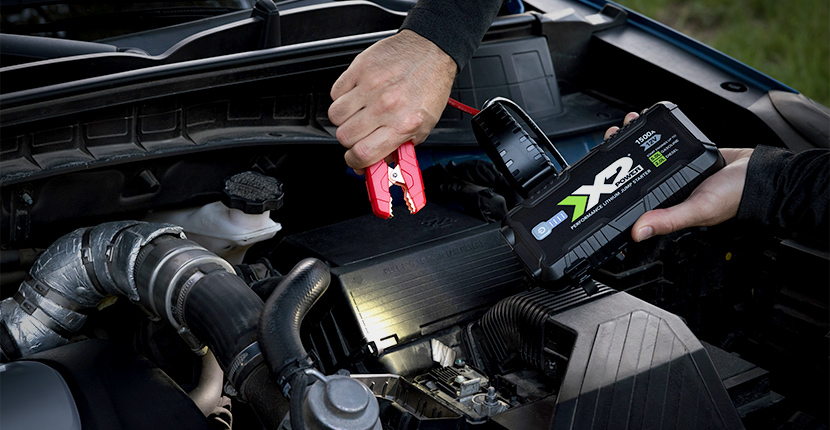How Do You Jump a Car with a Portable Power Pack?
- by Joe Weber - updated on 9/30/2024

For years, jumper cables have been the go-to for jump-starting a dead vehicle. They get the job done, but there's one big downside—they need another vehicle, which isn't always easy to find, especially if you're stuck somewhere remote. That's where a portable jump pack comes in. It's a safer, easier, and quicker alternative to the old-school jumper cables.
What is a Portable Jump Starter?
A jump starter, often called a power pack or jump pack, is essentially a portable battery with attached terminal clamps. It lets you jump-start your car without needing another vehicle. There are two main types of jump packs: lead-acid and lithium.
Lead-acid jump packs are the older and bulkier option. They're heavier and bigger than lithium models and have a high self-discharge rate, meaning they need frequent recharging. They're also prone to sulfating, which can permanently reduce battery capacity if left undercharged for too long.
Lithium packs are smaller and far more efficient, offering a much higher energy density. This means they deliver the same power as lead-acid packs but at a fraction of the size and weight. Plus, they won't lose battery capacity if left discharged. If you're considering a jump pack, lithium is the way to go. Batteries Plus offers two great jump-starter options for your car or truck from our very own X2Power brand.
You can read all about our fantastic X2Power jump starters in "Introducing the New X2Power Lithium Jump Starter".
What are the Advantages of Using a Jump Starter Instead of Jumper Cables?
The main advantage of a jump pack is that you don't need a second vehicle, but there are plenty of other benefits too. Most jump packs are equipped with protection against reverse polarity and short circuits, making them much safer than traditional jumper cables. They're also more reliable since you're not relying on the condition of a second vehicle's battery, which might not provide the optimal current needed.
Plus, many jump packs are multi-functional, and capable of recharging phones, tablets, and other USB devices, with some models even featuring an LED flashlight.
How Do You Jump Start a Car Using a Portable Jump Starter?
Now that you're sold on getting a jump starter, how do you actually use one when the time comes? Follow these super-simple steps to jump your dead car battery.
- Grab your jump starter and connect the cables to the device.
- Connect the positive (red) battery clamp to the positive post of the dead battery.
- Connect the negative (black) battery clamp to any unpainted metal surface on the car.
- Press the power button on the jump starter to begin sending power to the battery.
- Try turning over the engine. If the vehicle does not immediately start, wait a few minutes to allow current to flow into the battery before trying again.
- Once the engine has started, disconnect the clamps in reverse order, removing the negative (black) clamp first and the positive (red) clamp second.
When Do You Need to Recharge Your Jump Pack?
Keep in mind that the jump pack needs to be charged before you can use it, so make sure to do that before stashing it in your car or truck. Depending on the model and its amperage, your jump pack can deliver between 20 and 50 jump starts before recharging.
As you use the jump pack, it will eventually need to be recharged. Thankfully, all of our jump packs make it simple to check your remaining power with an LED charge indicator conveniently located on the device.
Pick Up Your Portable Jump Pack at Batteries Plus
Shop our selection of lithium jump starters online. Looking for a replacement battery or light bulb? Visit the Batteries Plus Automotive Center for a huge selection of additional popular vehicle essentials like light bulbs, wiper blades, and more.
If you're interested in learning more about maintaining your vehicle, we have a great assortment of helpful articles available in the Batteries Plus Blog, including "How Do You Keep a Car Battery from Dying When Not in Use?" and "Check Engine Lights: Common Reasons Why They're On"